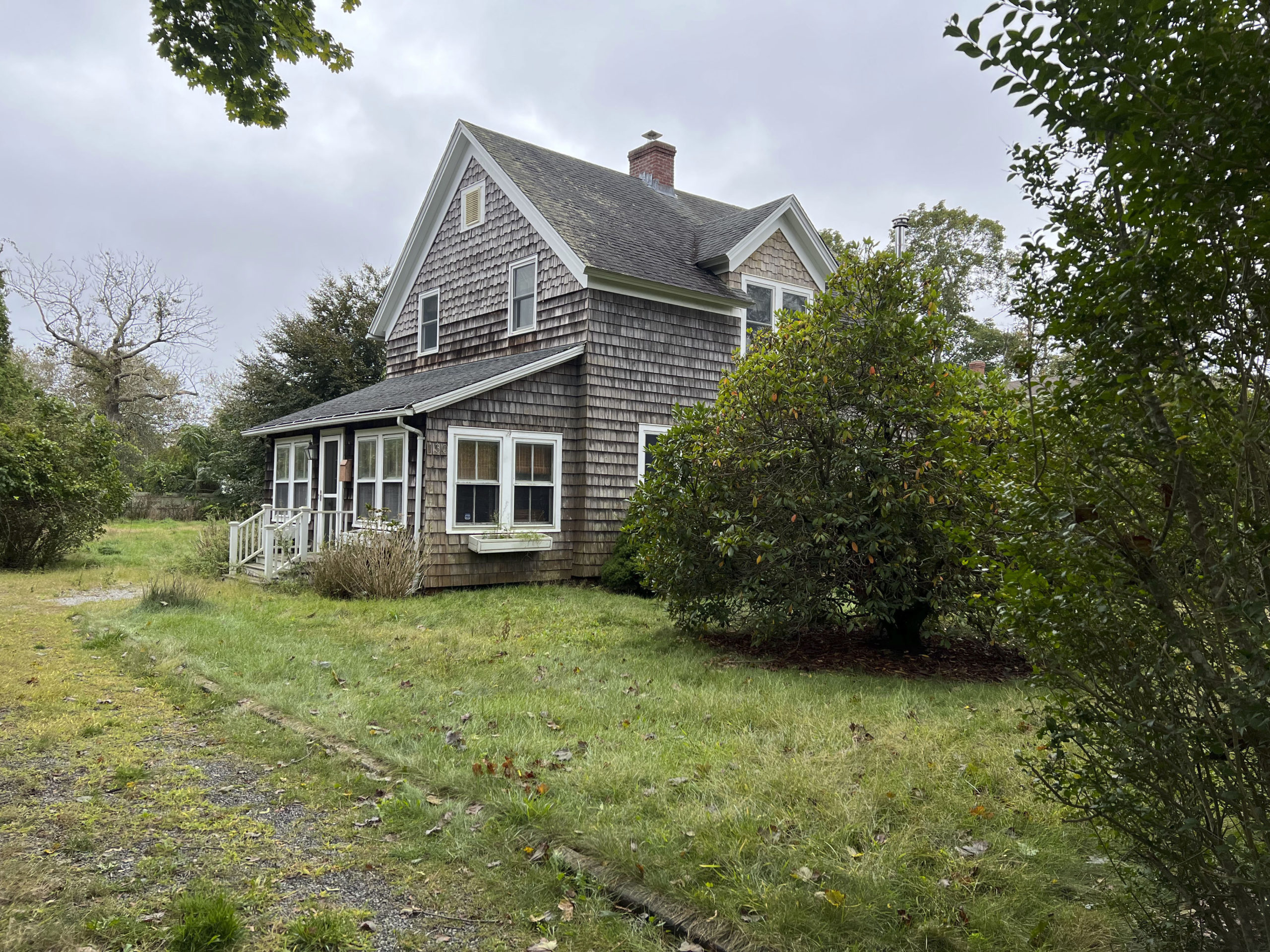
A split Southampton Village Board of Architectural Review and Historic Preservation has started the landmarking process for 130 Powell Avenue, a wood-shingled gable-style home that dates to 1916 or earlier, to prevent the house from being demolished.
While all board members agreed that the house should not be torn down, there was division on whether it should be landmarked as a means to protect it. Because the house is outside of a historic district, the board had a choice: Either landmark the house, or grant a certificate of appropriateness for demolition.
The board ultimately voted, 3-2, on September 27 to go the landmarking route.
“We’re left this evening with one of two choices, and I’m very comfortable with not seeing this house destroyed, because once it’s gone, it’s gone,” Chairman Jeffrey Brodlieb said.
The 1,400-square-foot house on 0.4 acre sold over the summer for $950,000. The real estate listing called the property an “investor’s dream.”
The new owner, 130 Powell LLC, enlisted Southampton-based attorney Heather Wright to ask the board for the green light to raze the house. “This property does not meet the criteria for landmarking,” she told the board.
But the majority of members saw it differently.
Member Sarah Latham said that a number of buildings on Powell Avenue from 1900 to 1916 had been outlined for a potential historic district, though it was never created. She noted that the street was developed shortly after the arrival of the Long Island Rail Road in 1870 and has always contained light manufacturing establishments, such as coal companies and lumberyards. The house at 130 Powell Avenue, she said, is typical of small-scale houses built on the street.
There had been a grouping of 11 buildings, though not all have been as well protected as others, she added. “I would hope that we wouldn’t continue to pick these off one by one, because they represent vernacular buildings — workers’ cottages — that are every bit as important as the big, quote, ‘cottages’ and estates on the water,” Ms. Latham said.
Member Peter DeWitt said he acknowledges that 130 Powell Avenue is not a “great” building — no one famous lived there, and a famous person did not design it. However, he said, it is one of five “relatively intact” houses in a cluster. He urged that the house be incorporated into something larger rather than razed.
“It’s a deep lot, and it would be so easy just to keep the front just the way it is and do a gable out the back, you know, as far as kingdom come,” he suggested.
Member Mark McIntire was sympathetic to that idea, but not to landmarking.
“I’m not 100 percent convinced that it rises to the level of being a landmark house, but I do agree if it could be used and rehabilitated into a new use or a bigger structure then that would be a better use than taking the house down,” he said.
Member John Gregory said he agreed with Mark. “I would like to see the house saved,” he said — but he and Mr. McIntire voted against landmarking the property.
Ms. Wright told the board that a survey for a historic district that was never adopted should not be applied to this situation. She noted that the report Ms. Latham had cited included more than 30 properties on Powell Avenue. “When you talk about landmarking somebody’s property, you have to look very closely at the property itself,” she said.
She also pointed out that the house has been renovated. “I don’t think it’s quite as pristine as maybe it once was,” she said.
Mr. Brodlieb said that while the decision before the board is black or white — either allow by default the demolition of the house or pursue landmarking — the result may be somewhere in the middle. He said that what the board is trying to get to is: “How do we preserve this house yet still having the opportunity for responsible development?”
He pointed to the language of the law and explained that while “people think of landmarking as something monumentally landmarked,” that’s not always the case. He quoted from the village code on landmarks: “The board may designate any individual property as a landmark if it, 1, possesses special character or historic or aesthetic interest or value as part of the cultural, political, economic or social history of the locality, region, state or nation.”
“It doesn’t have to be Mount Vernon,” Mr. Brodlieb said. “It doesn’t have to be a Frank Lloyd Wright house. It doesn’t have to be the home of George Washington.”
He said that the board’s black-or-white decision may compel the homeowner to think of alternatives somewhere in the middle.
Ms. Wright said that the board is using a back door to get her client to maintain the existing house in a renovation. “So what you’re saying is, if we came back here and said were we going to preserve part of the house, you wouldn’t vote to pursue landmarking?” she asked.
“I’m not saying that at all,” Mr. Brodlieb replied. He said that the board is voting not to approve the demolition, and what Ms. Wright’s client wants to do next is up to her and her client.
“I’d like to put on the record that I don’t believe there’s any special character or historic or aesthetic interest or value with this property, and I don’t believe that any of the information that came from a historical survey that has never been adopted by the village should be applied in this situation,” Ms. Wright said.
To landmark a property, the board must first notify the owner via registered mail and then hold a public hearing. According to the code, no building permits may be issued for a property until the board has made a decision.